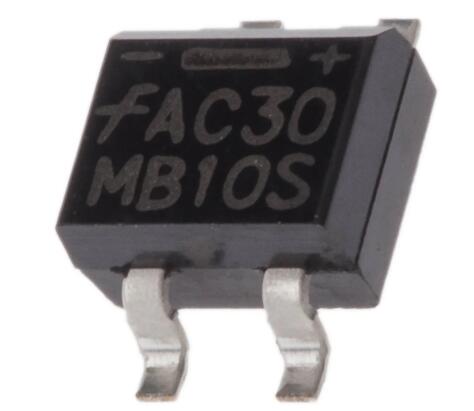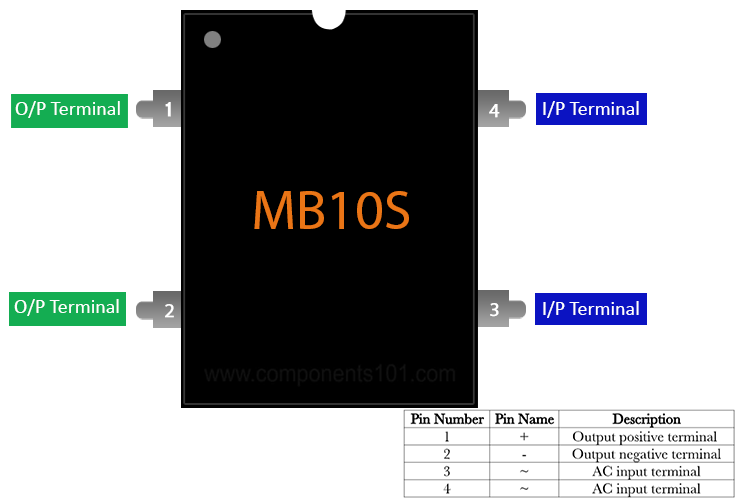The MB10S is a bridge rectifier diode, which is commonly used in AC-to-DC conversion circuits. Here's an explanation of its principle of operation and structure:
Principle of Operation: The MB10S bridge rectifier diode is designed to convert alternating current (AC) into direct current (DC). It follows a full-wave rectification process, which means it rectifies both halves of the AC input waveform.
The bridge rectifier utilizes a configuration of diodes arranged in a bridge configuration. The diodes are oriented in a way that allows current flow in the same direction during alternate halves of the input AC cycle, resulting in a pulsating DC output.
Structure: The MB10S bridge rectifier diode consists of four diodes arranged in a bridge configuration. Each diode within the bridge serves a specific function in the rectification process.
The structure of the MB10S typically consists of the following components:
-
Diodes: The MB10S contains four diodes: D1, D2, D3, and D4. These diodes are usually silicon diodes with low forward voltage drop and high current-carrying capabilities. The diodes are connected to form a bridge, allowing the AC input to be effectively rectified.
-
AC Input Terminals: The MB10S has two AC input terminals to which the alternating current source is connected. The AC input is typically the mains power supply with a sinusoidal waveform.
-
DC Output Terminals: The MB10S has two DC output terminals where the rectified direct current is obtained. The polarity of the DC output depends on the orientation of the diodes within the bridge.
-
Mounting Package: The MB10S is commonly available in various surface mount packages, such as the standard DIP (Dual Inline Package) or SMD (Surface Mount Device) packages. Different package options provide flexibility for PCB design and assembly.
Working Principle: When an AC voltage is applied to the AC input terminals of the MB10S, the diodes D1 and D3 conduct during one half of the AC cycle, and diodes D2 and D4 conduct during the other half. This enables the current to flow in the same direction through the load, resulting in a rectified DC output.
During the positive half-cycle of the AC input voltage, diodes D1 and D3 become forward-biased, while D2 and D4 are reverse-biased and do not conduct current. Conversely, during the negative half-cycle, D2 and D4 become forward-biased, and D1 and D3 are reverse-biased. As a result, the entire AC waveform is rectified into a pulsating DC waveform at the output.
It is important to note that the output of the MB10S is a pulsating DC signal, which still contains ripples. Additional filtering components, such as capacitors, are often employed after the bridge rectifier to smooth out the rectified waveform and obtain a more stable DC output.
The MB10S bridge rectifier diode offers a compact and efficient solution for converting AC to DC in a variety of applications like power supplies, battery chargers, and other AC-to-DC conversion circuits.





